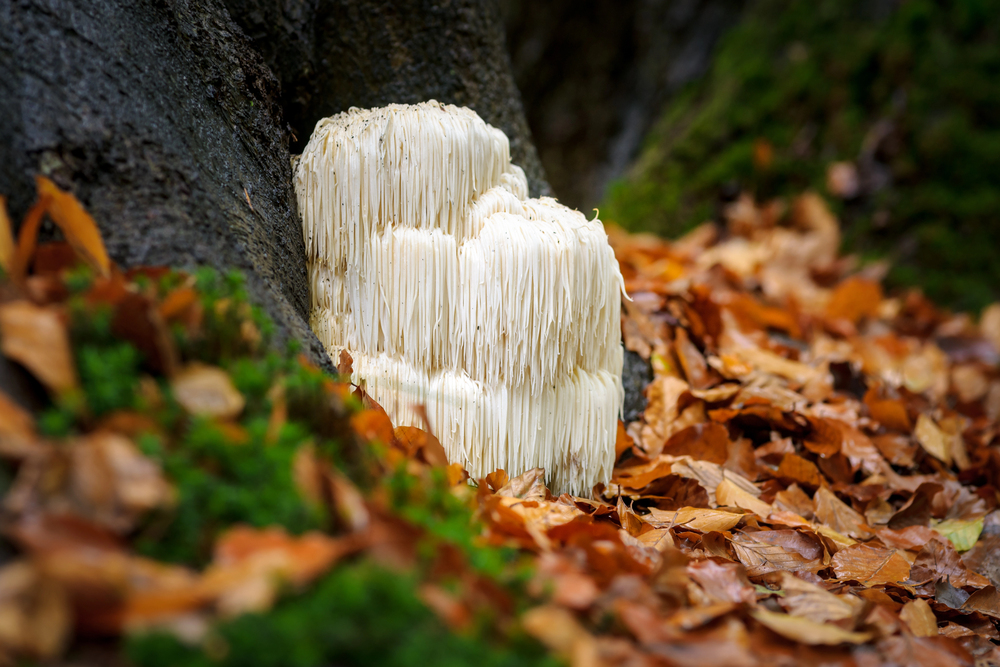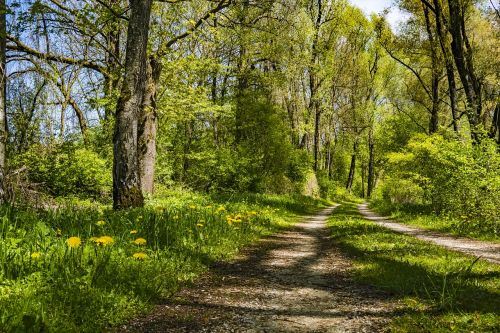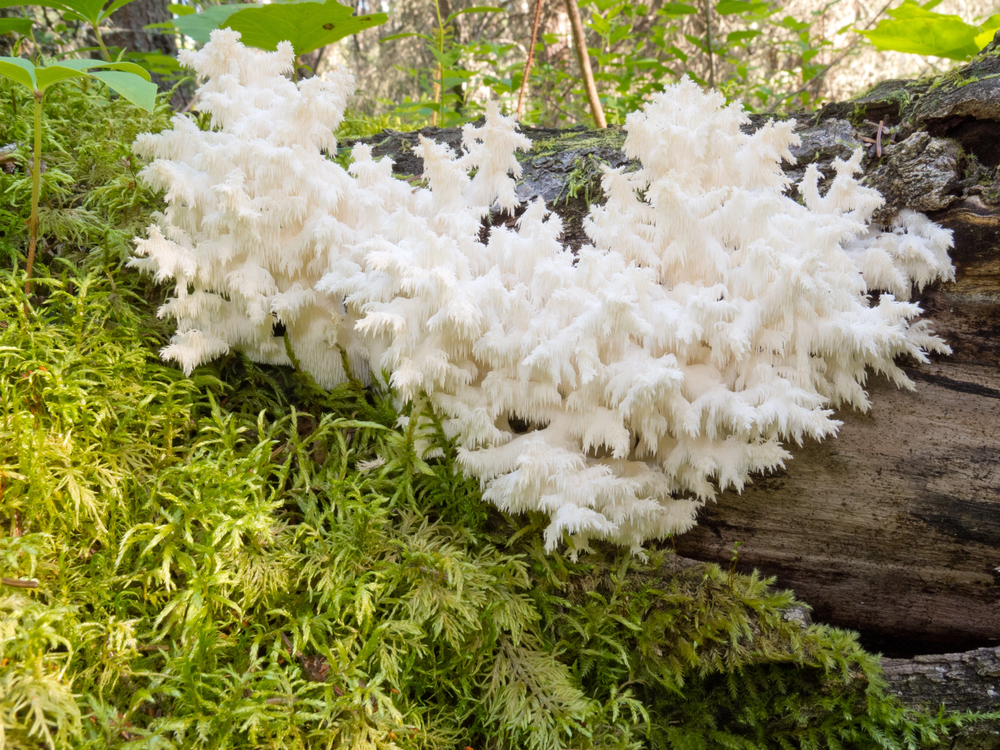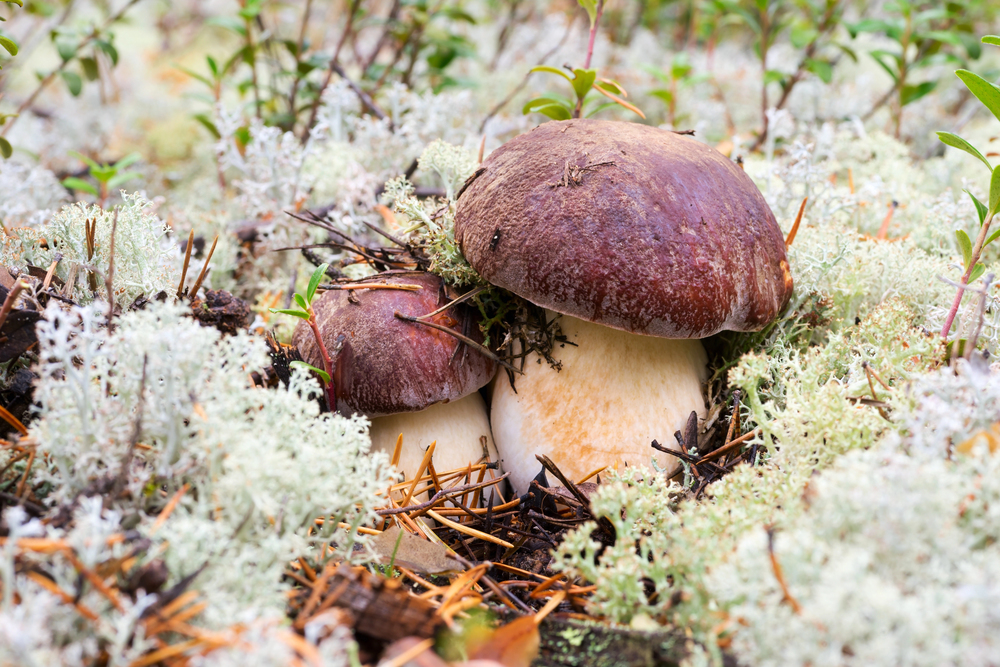Lion’s Mane, or Hericium erinaceus, is a fascinating fungus that presents a unique challenge for both mycologists and foragers alike. Recognizable by its distinctive pom-pom shape and the striking white to yellow spines, this species thrives on decaying hardwoods, primarily in temperate regions. Understanding its key identification features, in addition to its ecological preferences, is crucial for accurate recognition. As one investigates the subtleties of this intriguing organism, questions surrounding its potential culinary and medicinal benefits may arise, prompting further consideration of its importance in both nature and human applications.
Key Takeaways
- Lion’s Mane fungus features a unique cauliflower-like shape with soft, dangling spines up to 5 cm long, typically ranging in color from off-white to yellow.
- Spore prints are white, helping to distinguish Lion’s Mane from lookalikes like Hericium americanum and Hericium coralloides.
- It commonly grows on decaying hardwoods, particularly oak, maple, and beech, in damp, shaded environments.
- The cap can reach up to 30 cm in diameter, with long, pointed spines measuring between 1 to 5 cm in length.
- Careful attention to habitat and growth conditions is essential to avoid misidentification with toxic species; consult expert resources for assistance.
Identifying Features of Lion’s Mane
Lion’s Mane fungus, known scientifically as Hericium erinaceus, is easily identifiable due to its distinctive physical characteristics. The fungus features a roundish, oval, or lumpy shape akin to cauliflower or a pom-pom. It can grow up to 30 cm in diameter, characterized by soft, spongy flesh, and dangling spines. Each spine can reach a length of 5 cm and is pointed at the tips, with colors ranging from off-white to yellow that darken with age.
The attachment of Lion’s Mane to trees is through a short, thick stipe, often found on dead or dying hardwood trees, mainly oak and beech. As the fungus matures, spines demonstrate a notable color change, making careful observation vital for proper identification. Unlike other fungi, Lion’s Mane has no known toxic lookalikes, making it accessible for beginner foragers. Additionally, it is protected under Schedule 8 of the Wildlife and Countryside Act 1981, which prohibits wild collection.

When examined closely, the mushroom emits a slightly musty odor that intensifies with age. The culinary potential is significant; when cooked, it presents a mild, sweet, and nutty flavor, comparable to crab or lobster. Thus, recognizing these features improves both identification and appreciation of Lion’s Mane.
Habitat and Distribution
A diverse array of environments supports the growth of Lion’s Mane fungus (Hericium erinaceus), primarily favoring temperate regions across North America, Europe, and Asia. This intriguing fungus is typically associated with dead hardwood species, flourishing in ecosystems characterized by certain features. It thrives on dying or dead trees, often found in tree wounds.
Key habitat and distribution traits include:
- Native Regions: Found in North America, Eurasia, and parts of Oceania.
- Host Trees: Grows primarily on hardwoods such as oak, walnut, beech, maple, and sycamore.
- Temperature Range: Prefers cooler climates and tolerates frost, appearing in temperate zones.
- Humidity and Light: Enjoys damp environments, particularly in late summer and early fall, and often grows in shaded areas.
- Seasonal Growth: Most commonly fruiting from late summer through fall, its growth can vary with regional climate conditions. Research has shown that Lions Mane mushrooms may support cognitive function and memory through neuroprotective effects.
Lion’s Mane is particularly found in mature hardwood forests, contributing substantially to forest ecosystems through its saprophytic nature, which helps in decomposing dead organic matter. This unique distribution highlights its crucial role in maintaining biodiversity in temperate forest habitats.
Cultivation Techniques
Successful cultivation of Lion’s Mane fungus involves a blend of knowledge, technique, and patience. There are three main methods for growing this unusual fungus: grow kits, grain spawn using hardwood pellets, and log cultivation. For beginners, grow kits are the most accessible, as they provide a pre-mixed, sterilized substrate to start with ease. Conversely, grain spawn and hardwood pellets yield more control but require knowledge and equipment, offering a more advanced approach.
Preparation of the substrate is critical. A mixture of hardwood pellets, wheat, or oat bran must be sterilized to eliminate contaminants. The basic recipe calls for five cups of hardwood pellets, one and a quarter cups of bran, and six cups of water. After mixing, pasteurization guarantees the removal of unwanted microorganisms. Additionally, using decaying hardwood as a base for your substrate can further improve the nutrient-rich environment essential for Lion’s Mane growth.
Inoculation follows substrate preparation, introducing Lion’s Mane spawn. Incubation occurs under specific temperature and humidity conditions, typically requiring several days for full colonization. Fruiting necessitates a humid environment with regulated temperature. Maintain humidity by spritzing the substrate and ensuring adequate air exchange, allowing for robust development of this remarkable fungus. Harvest typically occurs within five to ten days after the initial pinheads form.
Edibility and Culinary Uses
With a mild seafood flavor reminiscent of lobster or crab, Lion’s Mane mushrooms are not only delicious but also versatile in the kitchen. These edible fungi boast a meaty texture, which improves their appeal when cooked. It is recommended to consume Lion’s Mane mushrooms cooked, as they are tough when raw. They can absorb flavors like a sponge, making them suitable for various culinary applications. Some popular uses include:
- Soups and Stews: Perfect as a hearty ingredient.
- Pasta Dishes: Substitute for chanterelles in risottos.
- Stir-Fries: Combine with vegetables for a flavorful dish.
- Sautéed Options: Cook with butter, garlic, and herbs for a side.
- Sandwich Toppings: Use as a unique layer in sandwiches.
When preparing Lion’s Mane, slice them into 1/4 to 1/2-inch pieces. Sauté in a hot pan with butter or olive oil until browned, allowing them to absorb extra flavors like lemon juice or spices. Their culinary flexibility allows for pairing with eggs, sourdough, or various meats, offering endless possibilities for the adventurous cook. Additionally, the unique long cascading spines of Lion’s Mane not only add visual appeal but also contribute to its distinct texture.
Medicinal Applications
Lion’s Mane mushrooms not only shine in culinary applications but furthermore offer a range of medicinal benefits that have garnered attention in recent research. Compounds within these mushrooms may protect against nerve damage and promote nerve growth, suggesting significant benefits for brain health and cognitive function. Studies indicate that Lion’s Mane may help improve cognitive abilities and prevent age-related mental decline, making it a promising candidate for treating neurodegenerative diseases like Alzheimer’s and Parkinson’s. Furthermore, certain compounds in mushrooms may enhance cognition, providing additional support for its potential role in cognitive health.
In addition, Lion’s Mane has beneficial effects on the immune system and digestive health. It may improve immune function by reducing inflammation and promoting the growth of beneficial gut bacteria. Research likewise suggests that it can aid gastrointestinal health, particularly for individuals managing conditions such as irritable bowel syndrome (IBS) and inflammatory bowel disease (IBD).
What’s more, Lion’s Mane shows potential in wound healing and cancer prevention. Topical application has been found to accelerate wound healing, while some studies suggest it may inhibit tumor growth and induce cell death in various cancer cells. These diverse medicinal applications make Lion’s Mane an appealing subject for continued research and exploration in natural health remedies.
Legal Protections and Conservation
Legal protections for lion’s mane mushrooms vary by region, reflecting their conservation needs and legal status. In the United Kingdom, for instance, harvesting this fungus is restricted under the Wildlife and Countryside Act 1981 because of its rarity, ultimately safeguarding its populations from over-harvesting. Moreover, promoting cultivation practices can help sustain demand while reducing pressure on wild habitats, ensuring that these valuable fungi continue to thrive in their natural environments. The potential for cognitive health benefits associated with lion’s mane mushrooms makes their conservation even more important.
Legal Status Overview
The legal status of lion’s mane fungus reflects a complex interplay between conservation efforts and regulatory frameworks across different regions. Unlike psilocybin mushrooms, which are controlled substances in many areas, lion’s mane is typically classified as a dietary supplement or food. This status applies to various countries, including the US, UK, Canada, and Australia, even though local regulations may differ.
Key considerations regarding the legal status of lion’s mane include:
- Legal classification as a dietary supplement rather than a controlled substance.
- Regional laws vary, emphasizing the importance of understanding local regulations.
- In the UK, lion’s mane is protected under the Wildlife and Countryside Act 1981 because of its rarity.
- Illegal to collect in the wild in some areas, promoting the need for conservation.
- Cultivation at home is an alternative method to guarantee legal compliance and ecological responsibility. Additionally, ecological integrity is crucial for preserving diverse ecosystems that support various fungi, including lion’s mane.
Despite its legal acceptance in many jurisdictions, responsible harvesting and ecological conservation are vital. Awareness of legal implications, ecological impacts, and sustainable practices can help maintain the balance between enjoying this unique fungus and protecting its environment.
Harvesting Restrictions Explained
Recognizing the fragility of lion’s mane fungus habitats is paramount as harvesting restrictions play a significant role in sustainable conservation efforts. Deforestation, climate change, and pollution pose serious threats, making careful foraging vital. In various European countries, lion’s mane is classified as regionally at-risk, leading to legal restrictions on harvesting. Responsible harvesting practices help protect these ecosystems. For example, only take what is necessary, leaving plenty behind for regrowth. Cut the fungus close to the base using a sharp knife to minimize damage to the substrate. Avoid overharvesting in a single area, as this can significantly harm the local population.
Seasonal restrictions apply, with ideal harvest times differing by region. For instance, winter in the southeast and autumn in the northeast are typically best. Furthermore, supporting certified sustainable sources reinforces healthy habitats. Engaging in local conservation efforts, such as tree planting, improves forest health and promotes biodiversity. Additionally, understanding the neuroprotective properties of lion’s mane can motivate sustainable habits that benefit both human health and the environment.
Cultivation for Conservation
Cultivation of lion’s mane mushroom plays a critical role in conservation efforts globally, particularly in regions where wild populations face legal restrictions owing to their declining numbers. While these mushrooms are legal in countries like the US and UK, harvesting can be illegal in areas where they are rare. Promoting cultivation helps to reduce pressure on natural habitats.
Consider the following factors for responsible lion’s mane cultivation:
- Local Regulations: Always check local laws before cultivating or selling lion’s mane.
- Sustainable Methods: Use log cultivation, which allows long-term yields from hardwood logs for up to six years. This practice emphasizes using proper substrate conditions that support healthy mycelium growth.
- Home Growing Kits: These kits promote personal cultivation, reducing the need for wild harvesting.
- Environmental Impact: Practicing responsible mushroom farming helps protect biodiversity and supports conservation.
- Healthy Growing Conditions: Confirm that growth environments maintain ideal temperature, humidity, and light for the best results.
Lookalike Species Identification
Identification of lookalike species is crucial for safely foraging Lion’s Mane fungus. Similar species, such as Bear’s Head Tooth and Comb Tooth, can appear visually similar but have distinct features that set them apart. Key identifying traits include the structure and arrangement of teeth, in addition to spore print characteristics, which help guarantee accurate identification and culinary safety. Engaging with the mycological community can provide valuable guidance for novice foragers and enhance identification skills.
Similar Hericium Species
Amidst the diverse Fungi kingdom, several Hericium species can easily be mistaken for one another owing to their similar appearances. Among these, Hericium americanum (Bear’s Head Tooth) and Hericium coralloides (Comb Tooth) often exhibit characteristics that may confuse foragers and mycologists alike. Each species shares visual traits, yet distinct features exist to help differentiate them.
- Hericium americanum: White, forking branches with spines at the tips, grows on deciduous wood, up to 30 cm wide. (Time of growth) in late summer and fall can also help differentiate this species from others that fruit at different times of the year.
- Hericium coralloides: Large white mass with open, coarse branches covered in teeth; typically found on dead hardwood.
- Hericium erinaceus: Known as Lion’s Mane; oval-shaped with spines that hang like a beard from a central stalk, often found on dead wood.
- White Coral Fungus (Clavulina cristata): Not a Hericium species; resembles coral with a branching structure, grows on the ground.
- Dimension Indicators: The sizes of these fungi can range widely, and size should not solely determine identification.
Understanding these lookalike species is vital for safe foraging and mushroom identification.
Key Identification Features
To accurately recognize Lion’s Mane fungus and distinguish it from similar species, several key identification features must be considered. This fungus typically displays a white or cream-colored cap, with long, dangling spines that create a unique, icicle-like appearance. The cap can grow up to 30 cm in diameter, though sizes between 15 to 20 cm are more common, and is attached to the substrate by a very short, broad stalk.
The spines of Lion’s Mane are long and pointed, usually measuring between 1 to 5 cm in length. Initially white or cream, these spines may progress to yellow or brown as the fungus matures. Observing the length and arrangement of these spines is essential for accurate identification. Lion’s Mane also thrives in moist, decaying wood, typically on dead or dying hardwood trees, such as oak, maple, and beech. It may appear as single fruiting bodies or in clusters. Distinguishing features from lookalikes include its white spore print, whereas similar fungi, such as Comb Tooth and Bear’s Head Tooth, exhibit different spine structures and colors. Close attention to these details will aid in accurate identification.
Culinary Safety Considerations
Accurate identification of Lion’s Mane fungus is not only vital for recognizing this unique mushroom but also critical for culinary safety. Several look-alike species can easily be confused with Lion’s Mane, necessitating careful observation. For instance, Bear’s Head Tooth and Comb Tooth Fungus share similar features yet have distinct characteristics that must be noted.
When foraging for Lion’s Mane, consider these culinary safety tips:
- Cooked is Best: Cooking improves digestibility and flavor while reducing harmful bacteria.
- Appearance Matters: True Lion’s Mane has dangling, soft spines, while look-alikes have different structures.
- Habitat Check: Lion’s Mane typically grows on decayed hardwood logs; verify this before harvesting.
- Start Small: If trying raw Lion’s Mane, begin with small amounts to gauge digestibility.
- Source Wisely: Purchase from reputable vendors with appropriate certifications to guarantee quality and safety.
Furthermore, cooking Lion’s Mane enhances its antioxidant properties, making it a more nutritious choice. Identifying Lion’s Mane properly can prevent foodborne illness. Remember, while some other Hericium species may be edible, misidentifying can lead to unsafe consumption. Prioritize knowledge and practice ethical foraging methods for safe culinary experiences.



